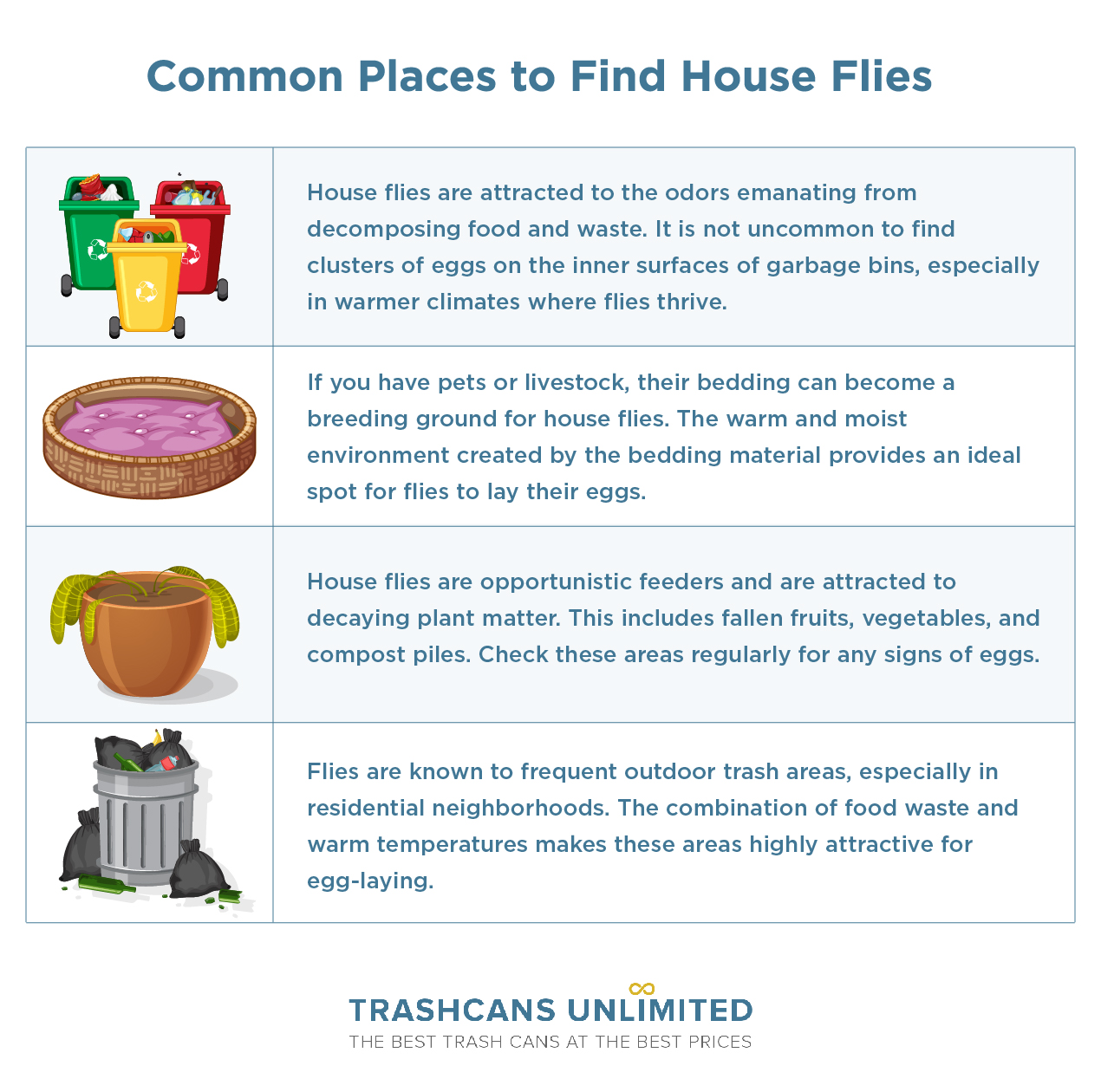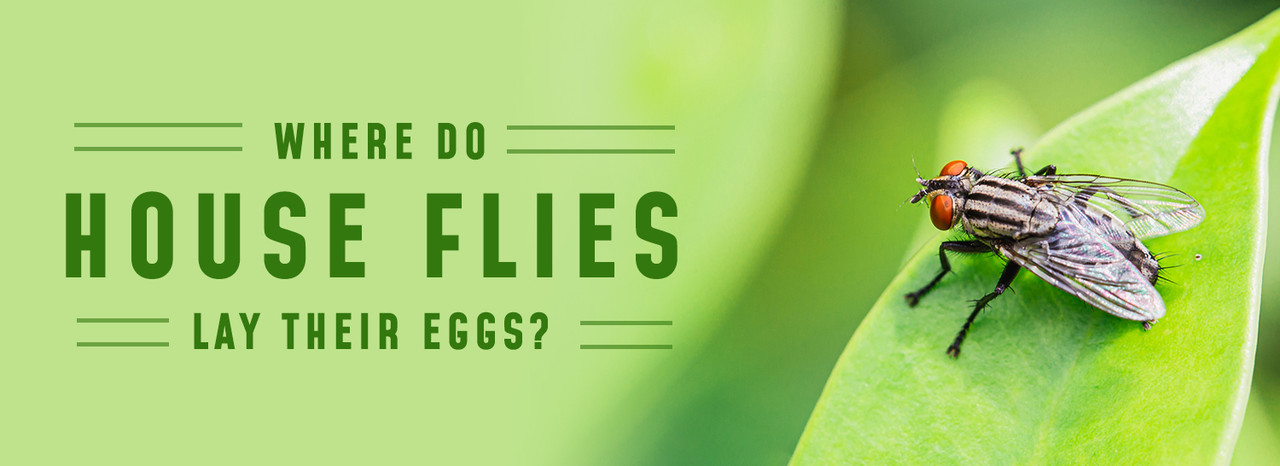House flies are common pests that can quickly become a nuisance in our homes and outdoor spaces. Understanding the habits and behavior of house flies is essential in order to effectively control and prevent infestations.
In this article, we will explore the different stages of a house fly's life, the ideal conditions for egg laying, how to identify house fly eggs, and methods to prevent infestations. But before delving into the details, what are house flies?
What are House Flies?
House flies, scientifically known as Musca Domestica, are a common household pest found all over the world. These small insects are known for their ability to breed rapidly and carry diseases, making them a nuisance and a health concern.
But in order to get a full understanding of how they can become such a nuisance so quickly, we need to delve into how their life cycle functions. So let’s take a closer look at the life cycle of the house fly.
The 5 Stages of the Life Cycle of a House Fly
Before we delve into the specifics of where house flies lay their eggs, let's first gain an understanding of their life cycle. The life cycle of a house fly consists of four stages and each stage plays a vital role in the development and reproduction of houseflies.
1. The Egg-Laying Stage
The life cycle begins with the female house fly seeking suitable locations for egg deposition. House flies will look for warm and moist environments for egg-laying, given these are the optimal conditions for the survival of the house fly. That is why they are attracted to decaying organic matter.
2. The Egg Stage
Once the eggs are laid, they go through a process called embryogenesis, which is the development of an embryo from the fertilized egg. During this stage, the embryo undergoes cell division and differentiation, gradually forming the body of the future larva. This will normally only last for 24 hours and the egg will hatch.
3. The Larval Stage
After the eggs hatch, larvae emerge, commonly known as maggots. These maggots are legless and have a cylindrical shape, with a mouthpart designed for feeding on organic matter. They have a voracious appetite and consume large quantities of decaying material, helping to break it down and recycle nutrients back into the environment.
House fly larvae go through several molts as they grow during a period of 4 to 7 days. Each molt involves shedding their outer skin, allowing them to increase in size. The larval stage is this time that they accumulate the necessary energy and nutrients to transition into the next stage of their life cycle.
4. The Pupal Stage
After the larval stage, house fly pupae form. Pupae are encased for 3 to 7 days in a protective shell known as a puparium, which is formed from the hardened skin of the last larval stage. Inside the puparium, the transformation to adult takes place through metamorphosis which involves the reorganization of tissues and the development of adult structures.
The body of the future adult fly takes shape, and all the necessary organs and appendages develop. This stage is relatively inactive as the house fly undergoes internal changes and prepares for its emergence as an adult.
5. The Adult Stage
Finally, adult house flies emerge from the pupae and are ready to reproduce. The newly emerged flies are pale in color and have soft bodies. As they mature, their exoskeleton hardens and darkens, and their wings become fully functional for flight.
Adult house flies have a lifespan of about 2 to 4 weeks, during which they focus on finding food sources and mating. They have specialized mouthparts called proboscis, which they use to suck up liquid food and are attracted to a wide range of food sources.
Understanding the life cycle of house flies is essential for effective pest control and prevention. By targeting specific stages of their life cycle, such as eliminating breeding sites or using insecticides to target larvae and pupae, it is possible to minimize their impact on human health.
Ideal Conditions for Egg-Laying
House flies are a common nuisance in many households. House flies have the ability to sense changes in their environment, allowing them to find the most suitable locations for egg-laying.
Understanding the conditions they seek can help us effectively target our prevention efforts and keep our homes fly-free. So here are a few things they consider before laying their eggs.
- They lay their eggs in areas rich in decaying organic matter given it provides a suitable food source for the developing larvae.
- They thrive in temperatures between 75 and 95 degrees Fahrenheit.
- They need humidity levels around 70–80%.
- During the summer months, they take advantage of the warm weather to reproduce rapidly, leading to an increase in their population.
It is important to note that house flies are not picky when it comes to their egg-laying sites. They can lay their eggs on almost any surface that meets their requirements. By understanding these preferences, we can take proactive measures to prevent infestations and keep our homes clean and fly-free.
The Process of How House Flies Lay Their Eggs
When it comes to the number of eggs a house fly can lay, the numbers are quite staggering. A female house fly can lay between 75 and 150 eggs at a time, and the total number of eggs laid throughout her lifetime can range from 500 to 2000.
Now, let's dive into the fascinating process of how house flies choose their egg-laying sites. These tiny creatures rely on their highly sensitive sense of smell to guide them towards organic matter in various stages of decay.
However, it's not just the smell that drives houseflies to select their egg-laying sites. They also have a preference for moist areas that provide a sufficient supply of food for their young, such as decaying plant matter or wet animal bedding.
Interestingly, house flies have evolved to be highly adaptable in their choice of egg-laying sites. Whether it's a neglected trash can in a kitchen or a pile of manure in a barn, house flies can find and exploit these areas to ensure the survival and proliferation of their offspring.
So, the next time you see a house fly buzzing around, remember that behind its seemingly insignificant presence lies a fascinating process of egg laying and reproduction. By staying informed and taking proactive measures, we can minimize the impact of house flies on our surroundings and maintain a healthier living environment.
How to Identify House Fly Eggs
By understanding the appearance, size, and common places to find house fly eggs, you can effectively protect your home or business from infestation. So here are a few characteristics to look out for:
- Size of a pinhead
- Oval-shaped
- 1.2 millimeters in length.
- Initially white and as they mature, they gradually turn darker, taking on a more cream or light brown hue.
Due to their small size, house fly eggs can be challenging to spot with the naked eye. However, they are commonly found in clusters, with each cluster containing hundreds of eggs. These clusters are usually laid on surfaces near potential food sources for the larvae.
The 4 Most Common Places to Find House Fly Eggs
Housefly eggs are commonly found in areas where organic matter accumulates. Identifying these areas and paying close attention to them during regular cleaning and maintenance is crucial to preventing infestations. Here are some common places to find house fly eggs:

By being vigilant and proactive in identifying and eliminating house fly eggs, you can effectively reduce the chances of a full-blown infestation. Regular cleaning, proper waste management, and maintaining hygienic conditions are key to keeping these pesky insects at bay.
The Top 3 Methods Prevent House Flies from Laying Eggs
Now that we understand where house flies lay their eggs and the conditions they seek, let's explore preventive measures to keep them at bay.
1. Maintain Your Space Clean
To prevent house flies from even getting into your home in the first place, here is a list of things you might want to add into your cleaning routine:
- Regularly dispose of garbage in sealed containers to prevent flies from accessing.
- Clean up pet waste promptly, as it can be a major attractant for flies.
- Keep compost piles well-maintained and covered.
- Pay close attention to areas where food is prepared or consumed.
- Regularly mop the floors and wipe down surfaces to eliminate any food residue.
By removing potential breeding sites and maintaining cleanliness, you can significantly reduce the chances of house fly infestations. But if you want to take things a step further, there are some natural and chemical repellents available. So let’s take a look at repellents.
2. Natural Repellents
Several natural repellents can help discourage house flies from laying eggs. Essential oils such as lavender, eucalyptus, or peppermint have been found to be effective in repelling flies.
These oils can be diluted with water and sprayed around the house, especially in areas where flies are commonly found. Additionally, planting herbs like basil and mint in your garden or near entry points can act as a natural deterrent for flies.
3. Insecticides
If natural repellents are not sufficient, insecticides specifically designed to target flying insects can be employed as a last resort if infestation levels become unmanageable. It is important to choose insecticides that are safe for indoor use and follow the label instructions carefully.
By maintaining cleanliness, removing potential breeding sites, and employing natural or chemical repellents when necessary, you can effectively keep house flies at bay and create a more comfortable living environment.
How to Get Rid of a House Fly Infestation
In the unfortunate event of a house fly infestation, swift and effective action is crucial to preventing further spread. House flies are not only a nuisance but also carriers of various diseases, making it essential to address the issue promptly. So here is a quick step-by step on how to get rid of house flies.
- Identify the source of the flies.
- Use a vacuum cleaner or a damp cloth to carefully collect and dispose of any visible eggs.
- Handle the eggs with caution to avoid accidentally crushing them, as this can release the larvae.
- Thoroughly clean and disinfect the affected areas to ensure complete removal.
- Regularly clean and sanitize areas where flies are likely to lay their eggs.
- If your infestation persists, it may be best to seek assistance from a pest control professional. The pros will assess the extent of the infestation, help you identify and prevent any potential entry points, and implement targeted treatment strategies.
It is important to note that prevention is key to avoiding house fly infestations. Regularly inspect your home for any potential entry points, such as gaps in windows or doors, and seal them appropriately. Keep screens on windows and doors in good condition to prevent flies from entering your home.
By targeting the optimal conditions for egg laying, maintaining cleanliness, and promptly removing eggs, we can prevent and control house fly infestations. Remember to stay vigilant and take the necessary preventive measures to keep your home and surroundings free from these pesky pests.

